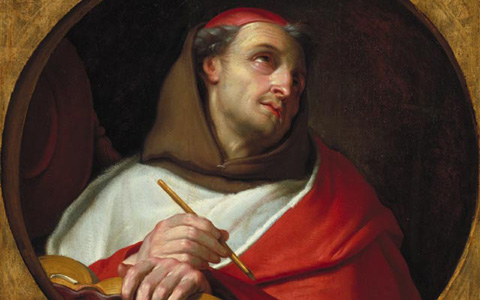By, Sandra Mulryan
“Nothing gold can stay,” concludes Robert Frost in his eight-line poem with the same title. With the waning of the Clare College curriculum at St. Bonaventure University, combined with the sudden death of the Intellectual Journey, I feel the way Frost did when he grieved for the passing of flowers, spring and life itself.
I know that change is inevitable, as Frost himself asserts in the poem. However, as is due to any life well lived, the end of the Intellectual Journey demands a eulogy.
Thousands of Bonaventure students have taken this first-year, foundational course in Clare’s nearly 20-year existence. I have taught hundreds of these students during this time.
What is “gold” about this course? As the keystone for Clare, it provided a framework for the Bonaventurian vision of how the physical world is apprehended through the senses; how the inner world of humans is uniquely exhibited through our memory, intellect and will; and how the entire metaphysical world leads us to, and is manifested in, God’s love. Yes, some students considered this a theology course at the beginning of the semester, but they soon learned that they were making a very special, personal journey no matter what religious tradition they came from (or didn’t come from), regardless of their race, ethnicity, gender or social class.
Students read excerpts from Aristotle, Plato, Homer, the Hindu scriptures, the Bible, the Roman stoic Marcus Aurelius, the atheists Sartre and Marx, stalwart early Christians such Matthew, Augustine, Francis of Assisi, Clare and the modern Vatican II documents. Authors such as Richard Wright, Martin Luther King, Jr., Richard Rodriquez, Maxine Hong Kingston, Simone de Beauvoir and Elizabeth Johnson helped stimulate discussions about race, ethnicity, gender and social class.
Selections included personal narratives, essays, excerpts from novels, essays, poems, drama, treatises, journals and scientific essays culled from the classics, philosophy, psychology, theology, art history and classical and contemporary literature.
The students were introduced to close reading, interpreting, asking questions and suggesting answers. They had to think for themselves, listen to each other, learn from each other and contribute to the conversation in an intimate and non-threatening environment. And, of course, they wrote about what they thought and what they learned.
As part of the original Clare College curriculum design, Bonaventure’s Itinerarium Mentis in Deum (Journey of the Mind [or Soul]), provided a framework for reaching across and connecting disciplines in readings selected by about a dozen faculty representing arts, sciences and education. What a golden treasury of some of the best of what has been thought and written is in the Intellectual Journey textbook.
Students learned to “build bridges” across religions, cultures and personal biases while analyzing the readings. They pondered what it means to be human, what is important in life, how to live life, and how to appreciate the goodness of the Creator.
Although many found John Henry Cardinal Newman’s “The Idea of a University” a dry and challenging reading, they began to appreciate that many subjects that do not seem to be immediately “useful” to their major, in the end helped them exercise their intellects much like running or lifting weights exercises the body; they began to understand that both mental and physical exercise are “good” in themselves.
Yes, Bonaventure students may be introduced to various intellectual journeys in their majors and in other required courses in the new general education curriculum, but not in so many ways, in one course: they may find some gold dust but will not discover the pure gold in the readings by Bonaventure, Francis, Clare, Hopkins, Wordsworth, Augustine, Sartre, de Beauvoir, Dickinson, Dante, Petrarch, Milton and others that introduce them to the life of the mind and the language of the heart.
SMULRYAN@sbu.edu






